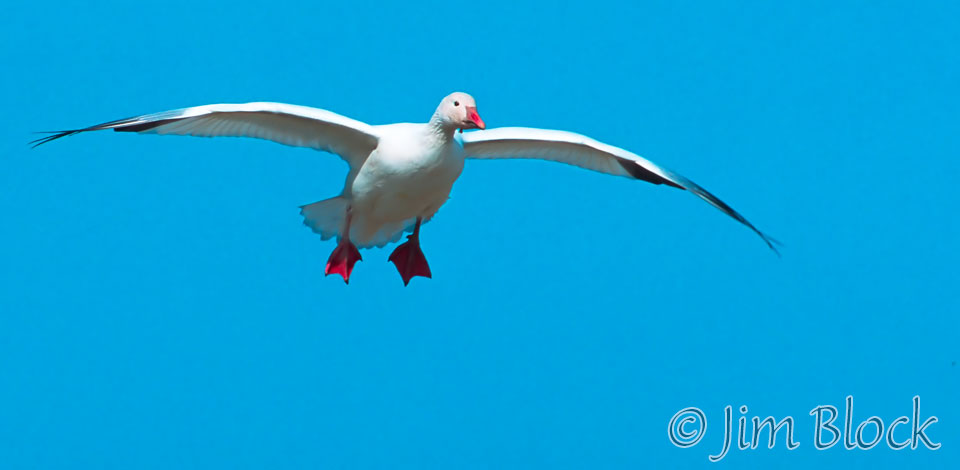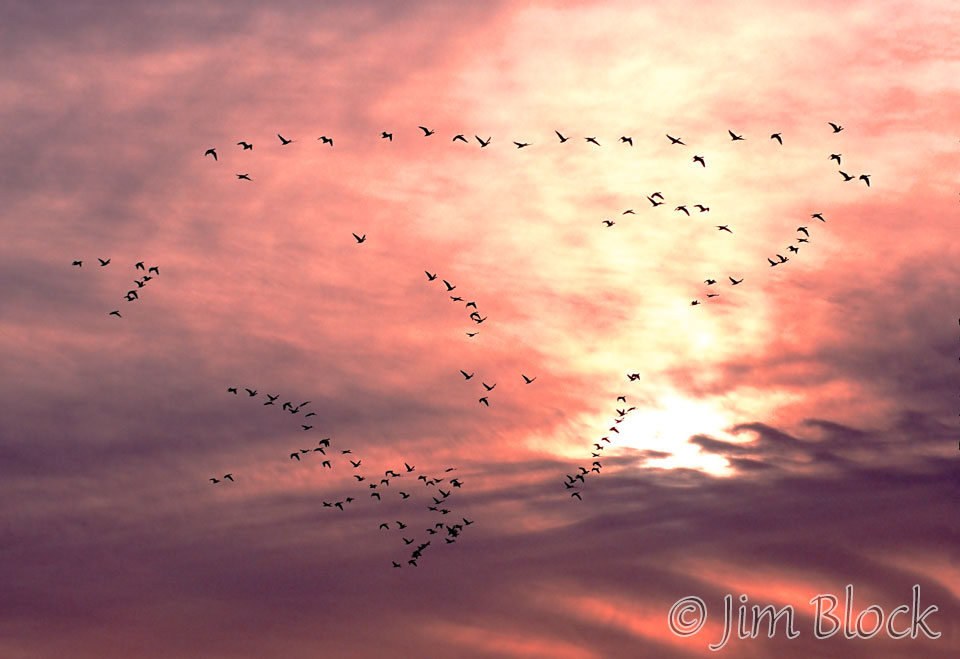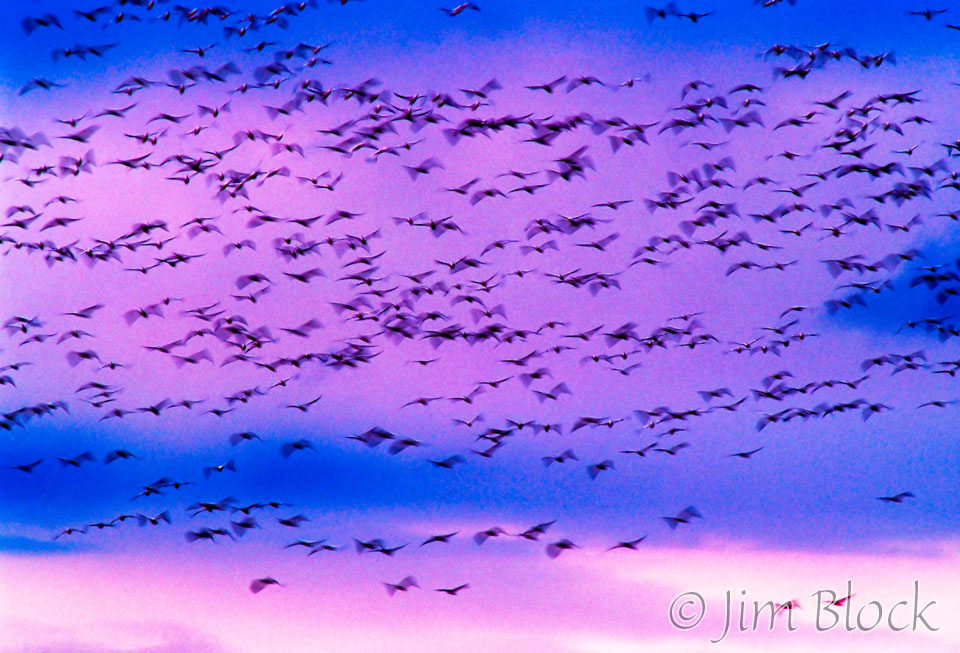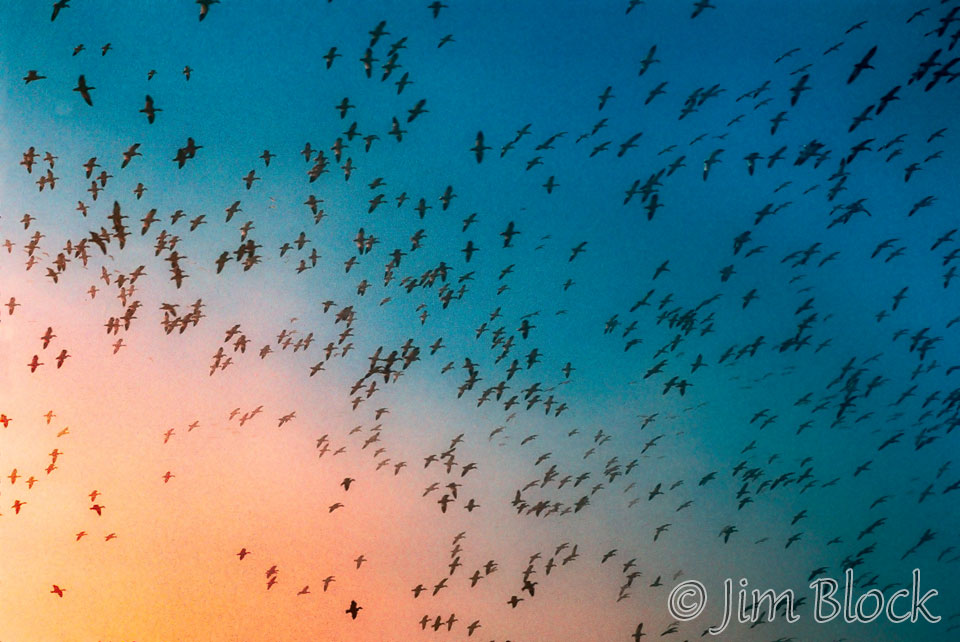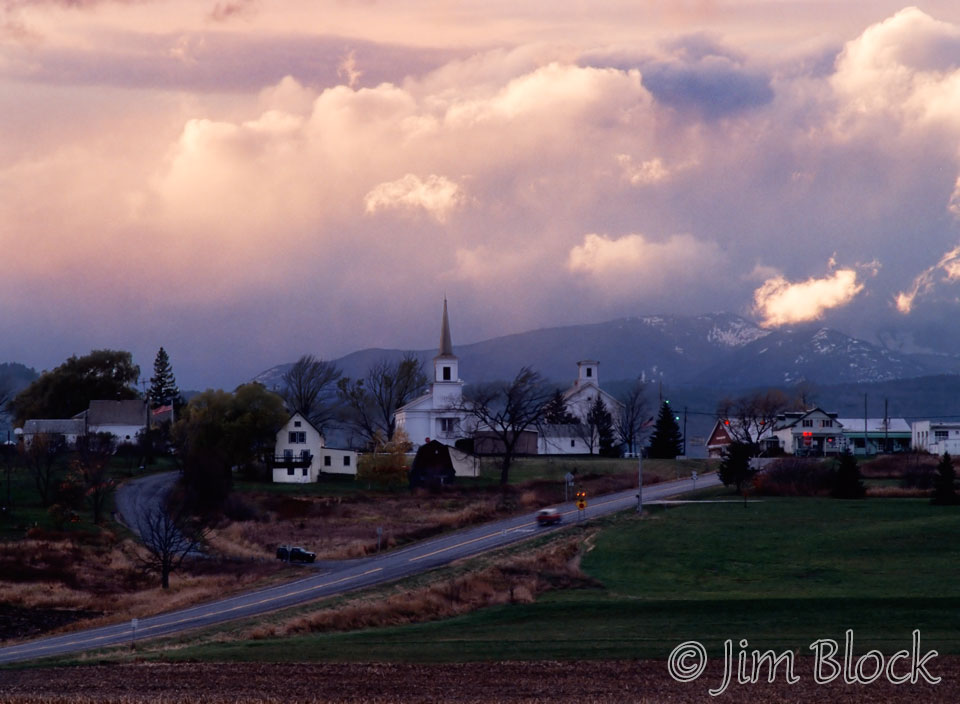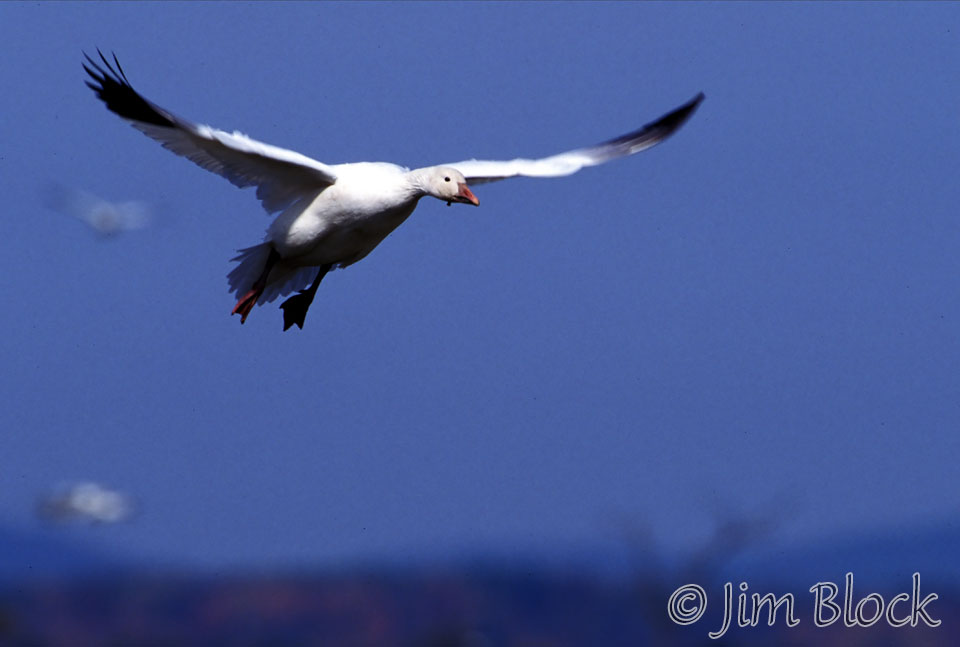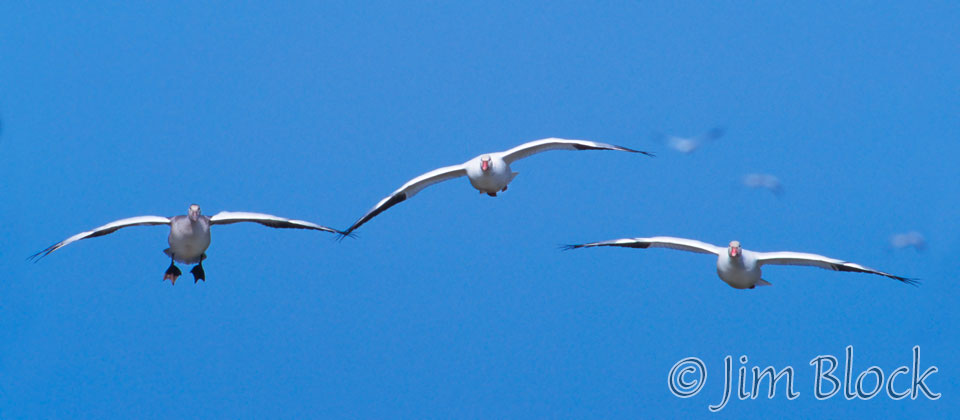
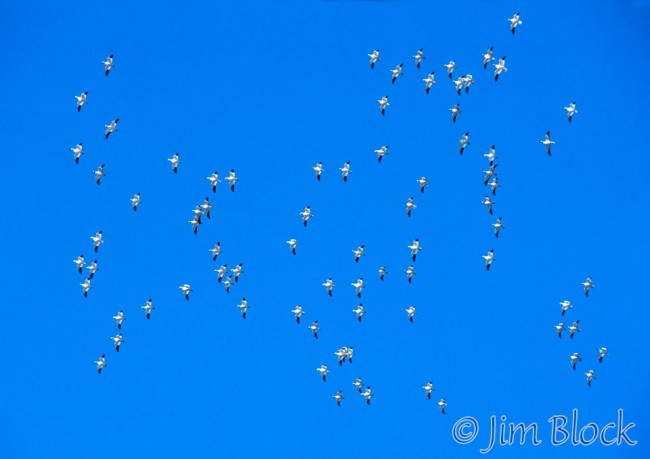
The foliage was well past its peak when Jann and I loaded our canoe onto our car and left the Connecticut River Valley an early Saturday morning in late October many years ago, back in the days of film. We crossed the Green Mountains to that other great valley—the Champlain—through Bethel, over the southern shoulder of Rochester Mountain, across the Middlebury Gap (with a quick peek at Texas Falls), and through several Middlebury campuses. Our destination was Addison, at the intersection of Routes 17 and 22A, and the Dead Creek area just to its west.
As we drove downhill toward Dead Creek from Addison through cornfields with the Adirondack Mountains in the distance across the narrow end of Lake Champlain, we noticed the sky was filled with waves of gray and white geese. It was a spectacular sight but just a taste of what was to come. Soon we came to a large turnout that numerous green signs proclaimed was the “Viewing Area”. Somehow the geese knew this was where they were to land. We parked and approached the wire fence that separated the people from the stubble-covered cornfield filled with literally thousands of snow geese.
Birders speak of “magnets” for birds. The marshes of Dead Creek WMA are one such magnet. They sit along a major migratory route for snow geese heading south to the Chesapeake Bay area. Each autumn these geese leave their breeding grounds along the Greenland coast using northeastern waterways as their navigational aids. They follow the St. Lawrence Valley then hang a left and follow the Champlain Valley to the Hudson and the Atlantic coast. Vermont has two traditional rest-spots along this interstate in the sky—the Missiquoi NWR at the north end of Lake Champlain and Dead Creek WMA in Addison County.
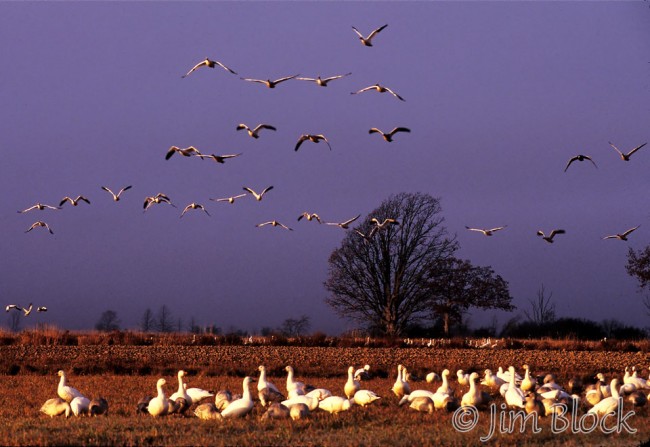
Most adult snow geese are large and white. The immature snows are grayish. They fly in close-knit family units consisting typically of two adults and three young snows. You virtually never see a single snow goose take off or land. They travel as a family or large groups of families.
Studying the immense flock grazing in the stubbled cornfield, we made a number of discoveries and observations aided by friendly local birders with impressive spotting scopes. The perimeter of the flock is guarded by adult sentries who keep a wary eye on the assembled birders and move the flock back if they feel threatened. A number of the adults had golden stains around their heads caused by rusting residue from the iron-rich tundra ponds where they feed in summer. A rare adult would have a dark blue-gray body and a white head. “There’s a blue” was frequently heard. These blue phase geese are not a separate species but merely a color perturbation. One of the highlights of the morning was when we saw an entire blue family fly toward us and land perhaps 20 yards away.
After a few hours with the snow geese, we decided to explore the back roads around Dead Creek. We came upon goose hunters who can legally shoot from various spots on the perimeter of the Dead Creek WMA. As we drove by one group of hunters, it appeared on first glance that there were a couple dozen snow geese in the cornfield immediately behind them. However, on further study, these snow geese turned out to be plastic bags on sticks. It didn’t appear that any geese had been fooled but we didn’t stay around long enough to find out how effective this really was.
It was a beautiful day, sunny and calm, and the temperature was pushing up through the mid-60s. So we unloaded our canoe and launched it in Dead Creek about a half-mile from the goose viewing area. Relatively quickly we came upon a single young snow goose swimming in Dead Creek. As we approached, it tried, unsuccessfully, to fly. We gave it some space and let it led us along for a while as we photographed it from a distance. Perhaps it was wounded by a hunter? We’ll never know, but we still think about it and it lives on in our photographs.
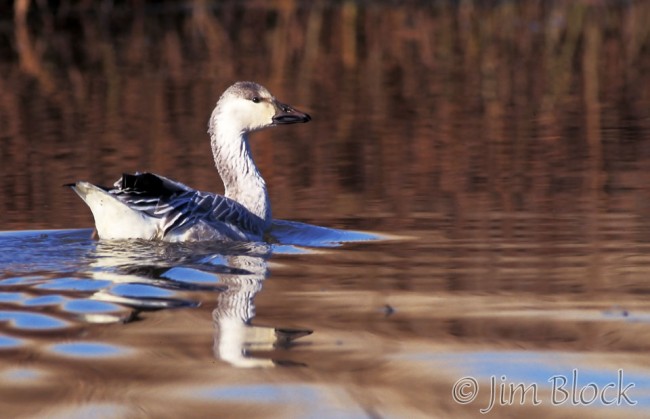
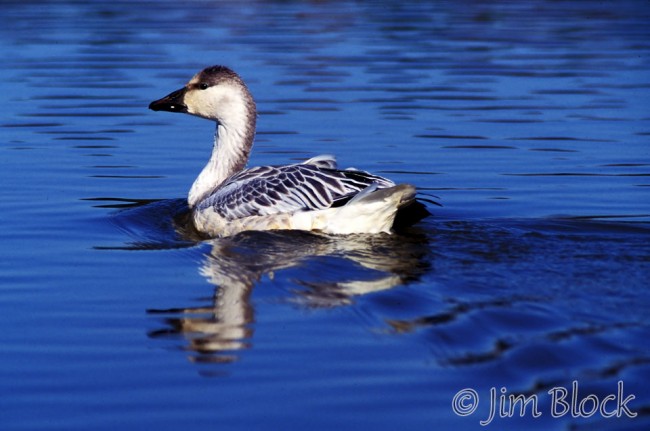
As we enjoyed the warmth of the sun and the stillness of Dead Creek, I visualized what it would be like to see the snow geese right at the crack of dawn. But this was a day-trip; I brought nothing but slacks, a tee-shirt, and a sweatshirt, along with my camera gear. Still, there was no strong reason why we couldn’t simply get a motel room for the night, so I floated the idea over toward Jann who was quite receptive. We mulled the idea around as we wandered the picturesque streets of historic Middlebury shopping and watching two kayakers play in the falls. Sure, why not, we concluded and headed north on Route 7 looking for a suitable motel. We booked the last available room, and it was a beautiful room, in a very nice family run motel in Ferrisburgh. We made it to a drug store just as it was closing and bought toothbrushes and things and had a great dinner in one of the numerous restaurants in tiny Vergennes, “the smallest city in the country”.
Sunday morning was cold and clear. As we drove the few easy miles along the ridge line of the hill separating Route 7 from Lake Champlain, we could see traces of light fog in the valleys. At the top of the hill in Addison we paused briefly to photograph silos to the east shrouded in fog and framed by hills made pink by the pre-dawn sun. As we dropped out of Addison toward Dead Creek, we were disappointed to see fog in the area that hosted thousands of geese the previous day. But our disappointment was very misplaced. Large numbers of geese were already feeding and more were arriving every few minutes.
As the fog moved in and out, the newly risen sun lit up the geese with a soft glow. Large groups took to the air and resettled a few hundred yards away as they responded to the changing conditions. For a while the fog swallowed the geese and the sun, and then it slowly dissipated. It was truly an other-worldly sight as waves of geese glided through amazing light. About every 10 minutes we would hear loud honking in the distant sky. Finally, after what seemed like many minutes, another wave of hundreds of geese would emerge from the fog and land in front of us.
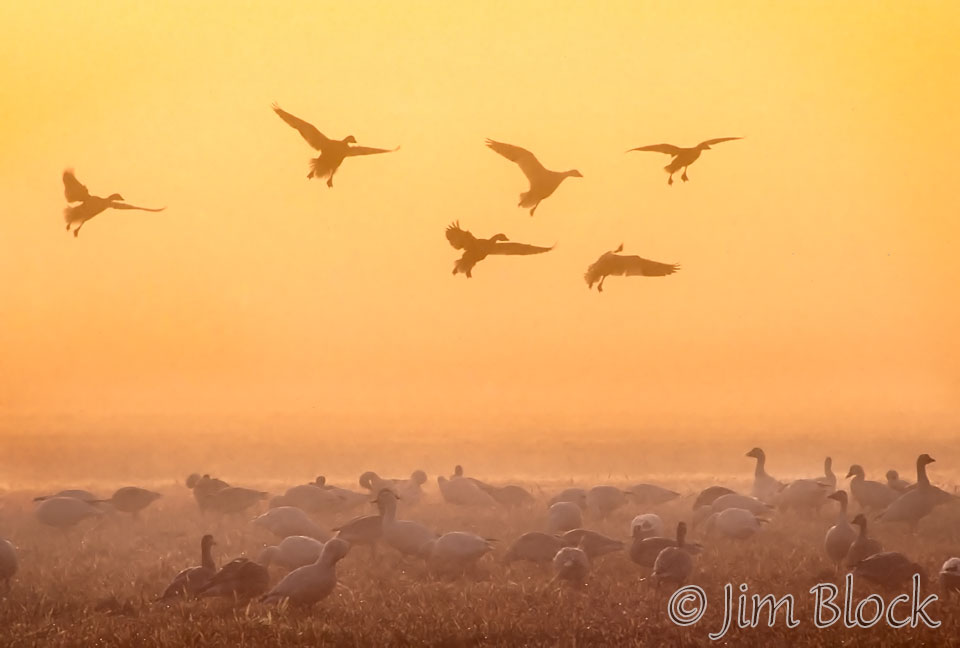
We were completely alone with the geese for a half-hour or so. Then over the next few hours, a dozen or so cars and trucks joined us. There appeared to be slightly more serious birders than tourists who just stopped to see what was happening. The crowd (if you can call it that) was sharing a moving experience that naturally drew us together. An expert birder passed out graham crackers and answered questions posed by novices such as us. He stated that the estimate of the flock at Dead Creek yesterday was 25,000 snow geese. If correct, that would represent approximately 10% of the estimated eastern population.
By 9 a.m. the sun had completely eliminated the fog and Jann and I had burned through numerous rolls of film. We talked about moving on, but the Dead Creek magnet held us for another hour. Finally, we said good-bye to the geese and headed to Lake Winona to decompress in our canoe. After lunch on an abandoned beaver house island, we began a gradual journey eastward through the spectacular Lincoln Gap, down Route 100 past Moss Glen Falls, and finally along the White River to the Connecticut. We are assembling an emergency pack for our next day trip in Vermont—toothbrushes, change of clothes, and the other things that will come in handy when we again impulsively turn a day-trip into a weekend adventure.

